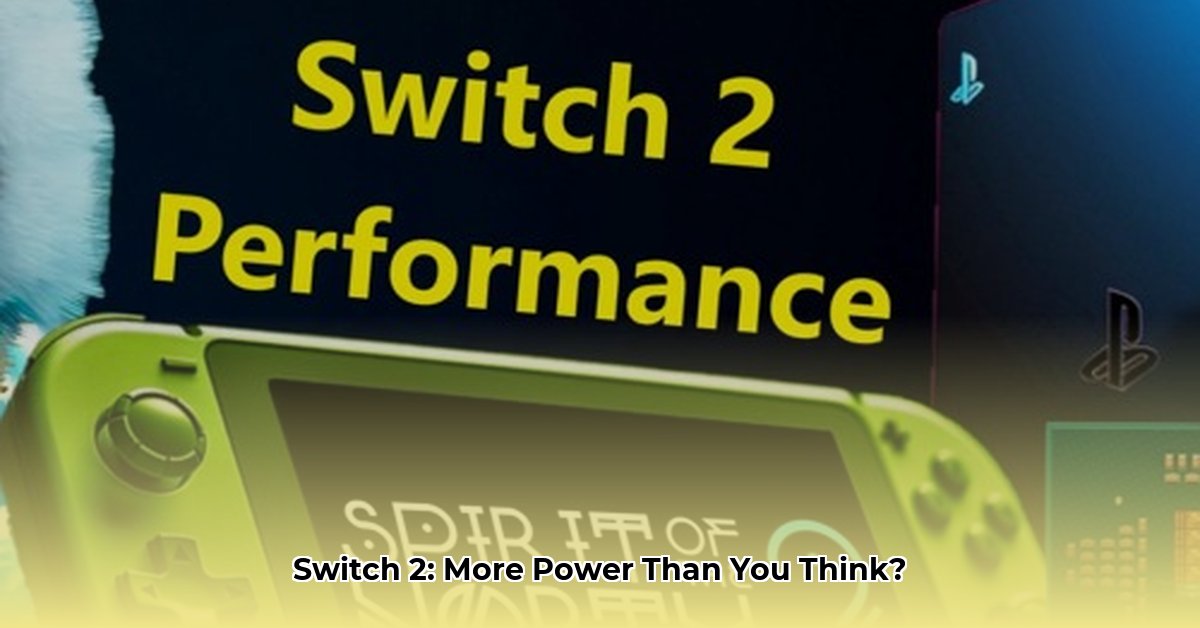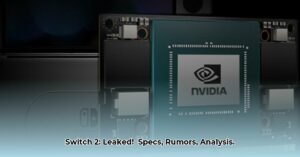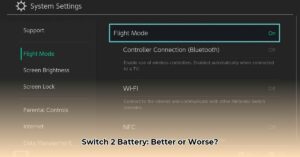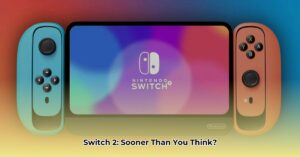Enhanced Power and Performance: Is It a Generational Leap?
The rumor mill surrounding the Nintendo Switch 2 is in overdrive, with whispers of significantly enhanced performance capabilities. While Nintendo remains tight-lipped, leaks and expert analyses paint a picture of a potentially powerful handheld console. This review delves into the rumored specifications, exploring the potential improvements and comparing them to the original Switch and its competitors. Remember, all information presented here is based on unofficial sources and should be treated as speculation until Nintendo releases official details.
The Heart of the Beast: Nvidia Tegra T239
At the core of the rumored Switch 2 lies the Nvidia Tegra T239 system-on-a-chip (SoC), a significant upgrade from the original Switch’s Tegra X1. Built on the Ampere architecture, the T239 boasts a reported 1280 CUDA cores, a five-fold increase over its predecessor. This suggests a substantial boost in processing power, potentially enabling higher resolutions, smoother frame rates, and more complex game worlds.
DLSS 3.5: Upscaling the Visuals
The inclusion of DLSS 3.5 is perhaps the most intriguing rumor. This AI-powered upscaling technology could be a game-changer, allowing the Switch 2 to render games at lower resolutions internally and then upscale them to higher resolutions, such as 4K when docked, without a significant performance hit. This might mean achieving a balance of visual fidelity and smooth gameplay, a challenge for handheld devices. However, the exact implementation and its impact on battery life remain to be seen.
4K Dreams and Handheld Improvements
Rumors suggest the Switch 2 will support 4K output when docked, likely achieved through DLSS upscaling. Handheld mode is also expected to see a resolution boost, potentially surpassing the original Switch’s 720p. A target of 1080p at 60fps in handheld mode is frequently mentioned, suggesting a significantly sharper and smoother experience on the go. Some speculate that less demanding games could even achieve higher frame rates, potentially reaching 120fps.
A New Generation of Games?
The rumored performance improvements could unlock new possibilities for game developers. More visually demanding games, larger open worlds, and faster-paced action titles could become viable on a handheld platform. The potential of DLSS and ray tracing, while still unconfirmed, further fuels speculation about the types of experiences the Switch 2 might offer.
Switch 2 vs. The Competition
While unlikely to match the raw power of the PlayStation 5 or Xbox Series X, the Switch 2 aims to elevate handheld gaming. Its strength lies in portability, allowing console-quality experiences on the go. The rumored enhancements suggest a substantial improvement over the original Switch, potentially closing the gap with current-gen consoles in certain scenarios.
Unanswered Questions and Cautious Optimism
Despite the exciting rumors, crucial questions remain. Battery life, storage capacity, price, and backward compatibility are all significant factors that will influence the Switch 2’s success. While conflicting reports suggest different RAM and storage configurations (8GB/12GB RAM and 64GB eMMC/256GB UFS 3.1 storage), we must await official confirmation from Nintendo. Until then, it’s best to temper expectations with a healthy dose of skepticism.
Rumored Specs and Potential Impact
Dissecting the Leaks
The information surrounding the Switch 2’s technical specifications remains fragmented and unofficial. However, consistent threads emerge from various leaks, suggesting some likely improvements.
- CPU: The eight-core Cortex-A78AE processor, or potentially a custom Nvidia chip, is consistently mentioned, indicating a substantial upgrade over the original Switch’s CPU.
- RAM: Leaks point to either 8GB or 12GB of LPDDR5X RAM, a significant increase from the original Switch’s 4GB. This increased RAM capacity could drastically improve multitasking and allow for more complex game worlds.
- Storage: Similar to RAM, storage leaks also vary, mentioning either 64GB eMMC or 256GB UFS 3.1. The latter offers considerably faster read and write speeds, impacting loading times and overall system responsiveness.
- Backward Compatibility: This crucial feature remains unconfirmed in leaks, but many speculate that Nintendo will likely offer backward compatibility with original Switch games. This factor could heavily influence purchasing decisions for current Switch owners.
Visualizing the Upgrades
| Feature | Original Switch | Rumored Switch 2 |
|---|---|---|
| Processor | Nvidia Tegra X1 | Nvidia Tegra T239/Custom Nvidia Chip |
| RAM | 4GB LPDDR4 | 8GB/12GB LPDDR5X |
| Storage | 32GB eMMC | 64GB eMMC/256GB UFS 3.1 |
| Resolution (Docked) | 1080p | Up to 4K (Rumored, probably via DLSS) |
| Resolution (Handheld) | 720p | >720p (Rumored, potentially 1080p) |
| DLSS | No | Potentially 3.5 |
| Ray Tracing | No | Rumored, unlikely at high resolutions |
Predicting Game Performance
A Noticeable Upgrade?
Based on the rumored specifications, the Switch 2’s game performance is predicted to be significantly better than the original Switch. The upgraded processor, increased RAM, and potential DLSS support all point towards smoother gameplay, higher resolutions, and improved visual fidelity. However, it’s crucial to manage expectations; the Switch 2 is unlikely to outperform the PlayStation 5 or Xbox Series X in terms of raw power.
Resolution and Frame Rate Expectations
The consensus among experts is that the Switch 2 will likely target 1080p resolution at 60fps in handheld mode. This would be a major improvement over the original Switch, which often struggled to maintain stable performance. Docked mode could potentially see resolutions up to 4K, though this is largely dependent on DLSS and the specific game.
DLSS: The Potential and the Unknowns
DLSS is expected to play a crucial role in achieving higher resolutions and frame rates on the Switch 2 without pushing the hardware to its limits. This could be particularly beneficial for more demanding games, allowing them to run smoothly on a handheld device. However, the effectiveness of DLSS can vary depending on the game’s implementation, and its impact on battery life is a key concern.
The Impact on Game Development
The rumored performance improvements could enable developers to create more ambitious games for the Switch 2. Larger open worlds, more detailed environments, and faster-paced action could become more common on the platform. Whether current-generation games from the PS5 and Xbox Series X will be ported to the Switch 2 remains to be seen, though it is considered more likely with the improved hardware and DLSS.
Final Thoughts
The Nintendo Switch 2 holds immense promise, potentially revolutionizing handheld gaming. The rumored specifications paint a picture of a significantly more powerful device, capable of delivering a richer and more immersive gaming experience. While much remains uncertain, the leaks and analyses create a sense of cautious optimism. However, it’s vital to remember that all of this information is speculative until officially confirmed by Nintendo. The gaming community eagerly awaits concrete details and the opportunity to experience the Switch 2 firsthand.







